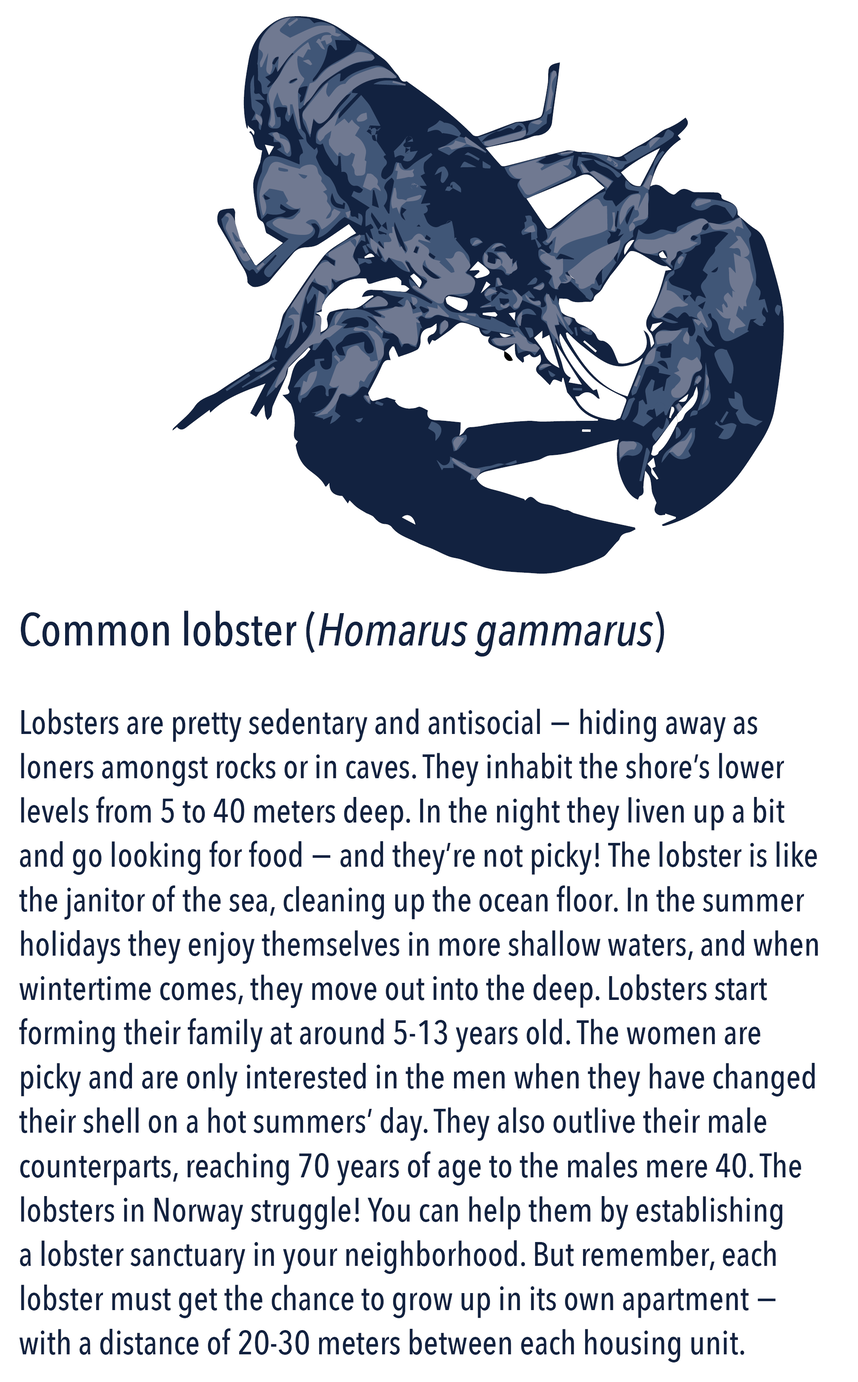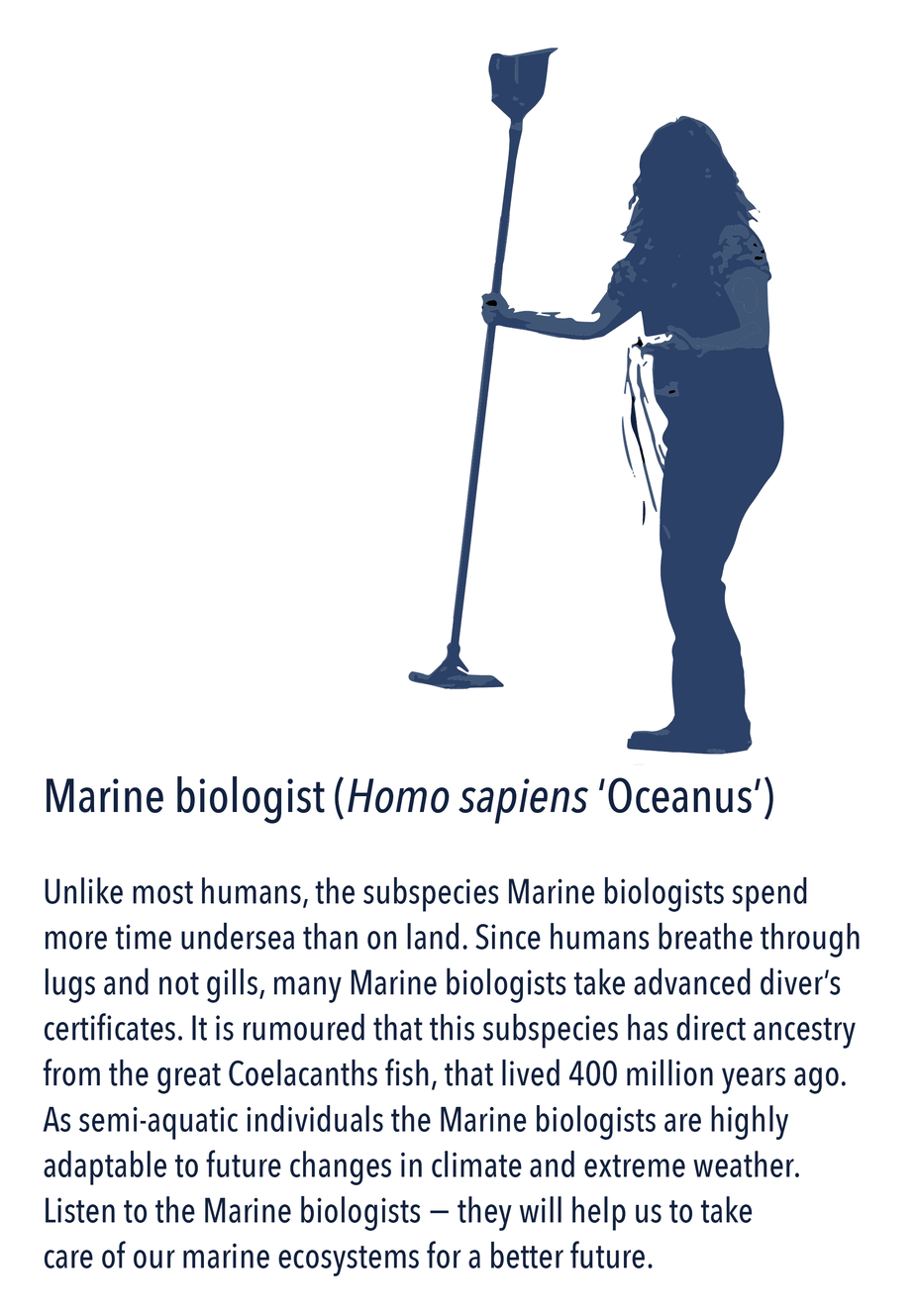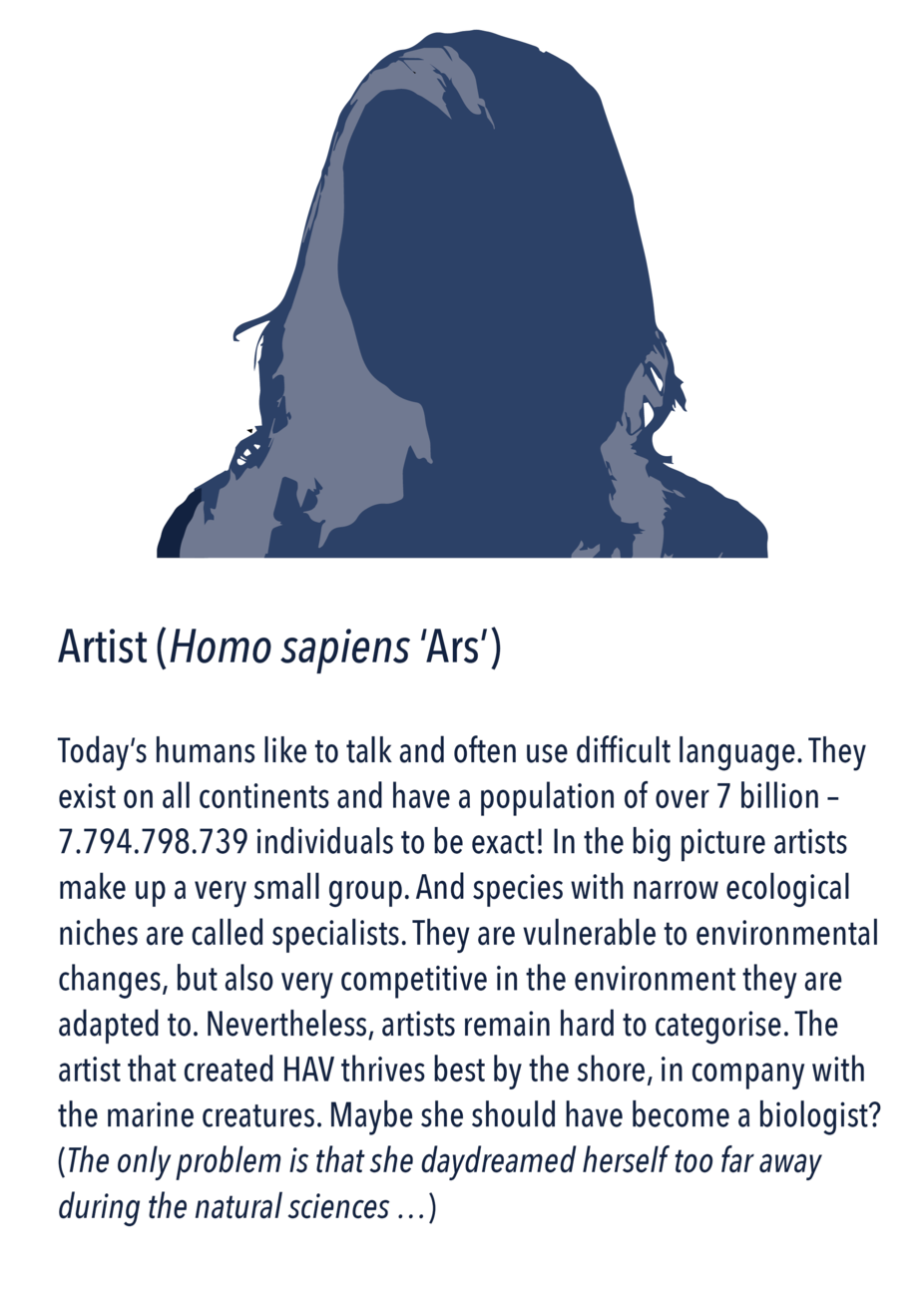In HAV you meet the co-creators: in a play with the classification system of living things, each is introduced with a profile picture and name. This system has seven levels: kingdom, phylum, classes, order, families, genus, and species. Organisms are commonly described by the two-term naming set-up of genus and species — like the blue mussel’s name Mytilus edulis. In Latin mytilus means a sea
mussel, and edulis commonly refers to edible plants and animals.
All living creatures are organised according to very basic and shared character-
istics. Some of the criterions are appearance, reproduction, mobility and functionality. A subspecies is a group within a species that has taken on some different features. Nevertheless, they are still similar enough to interbreed with the rest of the species.[1] In HAV, this system is supplemented with some newly discovered subspecies and hybrids. The latteris the offspring resulting from combining the qualities of two organisms of different breeds.
The concept of multispecies co-creation is suggested as a participatory method that aims to improve the cohabitation between species on land and at sea. To meet a broader set of interests, we must acquaint ourselves with other than humans’ ways of life. By including life below water and those living on land,
a myriad of species emerges in the neighborhood. This is a diversity worth knowing: it is essential to the task of taking care of a complex biological world. Therefore, by this method, the stakeholders of a site development are encouraged to ally with the nonhuman others that are affected by human behaviour and intervention. As a hopeful action, this may be a way to give their behavioural expressions greater significance in our lives. Henceforth, local teams of
co-creators from all around the world may come to the fore.















